Part 1. Introduction of the Plan
This section provides the overall context for the Plan.
A. Author(s) of the Plan and Date
B. Purpose of the Plan
C. General Property Description
A. Author(s) of the Plan
Author(s) of the Plan and Date
B. Purpose of the Plan
Purpose may read something like the following:
The purpose of this plan is to describe how we envision the future condition and public use of Preserve XXX. This plan describes the natural and cultural resources of Preserve XXX and recommends management and restoration actions needed to preserve, protect, and restore the Tract’s natural habitats and significant species populations, as well as cultural resources. At the same time, public use and enjoyment must be balanced with these actions (or other suitable wording)
Example:
Essex Land Trust Cross Lots
The purpose of this plan is to describe the natural and cultural resources of Cross Lots (Harriet Cheney Downing Preserve) and to recommend management and restoration actions needed to preserve, protect, and restore the Preserve's natural habitats and cultural features. At the same time, public use and enjoyment must be balanced with these actions.
C. General Property Description
More detailed description is in Part 3.
(Include a map showing location within the town and access points)
- Physical characteristics: location, size (acres), general landscape description, special features, access points, existing structures
- History and background: date of acquisition, history of acquisition, former use(s) and history of site
- Ownership
- Deed Restrictions
- Other use/management restrictions
- Current management: trail creation/preservation, maintenance, etc. (Keep general – provide details under Part 5)
Part 2. General Goals
This section should answer the question: Why did you acquire this property?
This section sets the broad goals of the Plan, and provides the foundation for the more detailed recommendations in Part 6.
A. How does this property fit into other open space plans?
B. What are your goals?
A. How does this property fit into town/state open space plans or existing open space?
Examples of goals might be:
- Protect and manage significant tract of undeveloped land
- Protect and/or connect corridors (e.g. riparian, wildlife)
- Protect an area identified in the town as high priority open space
The State's overall goal is to preserve 21% of Connecticut's land, or 674,210 acres, as green space by the year 2023. To date, 72% of the goal has been acheived through the direct purchase of open space by the State (250,946 acres) and through state support of local acquisitions (352,634 acres).
Key References
The CT DEP Open Space website includes:
- The Green Plan: Guiding Land Acquisition and Protection in Connecticut 2007-2012
- Links to The Recreation and Natural Heritage Trust Program
- List of Connecticut Land Trusts
- Open Space and greenway properties owned by the State
- Farmland preservation information
B. What are your goals for public use of the property? Is the property open to the public?
- Provide the public with opportunities for recreational and scenic enjoyment
- Encourage scientific research, monitoring and inventory work
- Provide for environmental education opportunities
Part 3. Characteristics of the Site
This section is provided as an overview and does not attempt to detail all the information found in reports and documents prepared by others – list these in the bibliography. Don’t get hung up on every category—fill in whatever you can (resources are listed under Technical Resources). Our particular emphasis is on Habitats as the most logical way to approach management goals, so we’ve listed that first.
A. Natural Resources
B. Plants and Wildlife
C. Cultural Resources
A. Natural Resources
A Habitat is simply the place where an organism lives including both the biotic (living) and abiotic (nonliving) components. The ways to describe habitats are endless. Unless you have access to professional assistance, we recommend that you characterize your Preserve and the habitats of which it is composed using the following four general categories.
- Forests & Woodlands Forests - Trees with their crowns overlapping, generally forming 60- 100% cover Woodlands - Open stands of trees with crowns, not usually touching, generally forming 25-60% cover.
- Shrublands - Shrubs generally greater than 0.5 meter tall with individuals or clumps overlapping to not touching, generally forming more than 25% canopy coverage; tree cover generally less than 25%.
- Grasslands/Meadows - Grasses, forbs, ferns, and other herbaceous plants dominant, generally forming at least 25% cover. Trees, shrubs, and dwarf-shrubs generally less than 25% cover.
- Special Habitats: Vernal pools; bedrock ledges, and other special areas can be noted here.
More Specific Habitat Examples
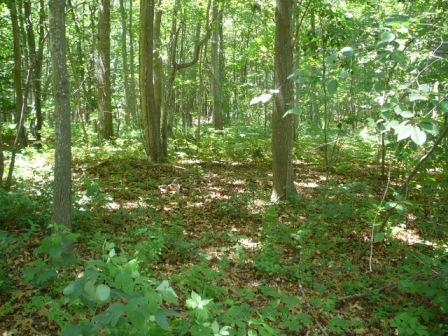 |
 |
| A deciduous forest with a dense shrub understory. | A red maple forested swamp with a dense shrub understory. |
 |
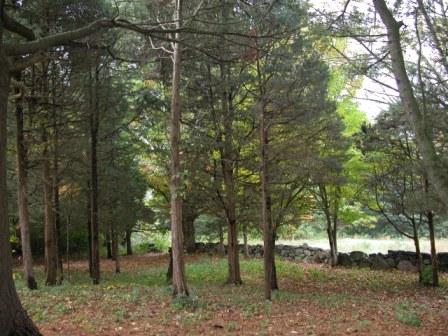 |
| A Woodland Habitat of dogwood trees in Essex. | Another example of Woodland Habitat - a red cedar woodland. |
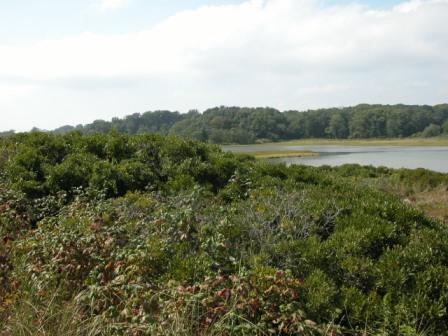 |
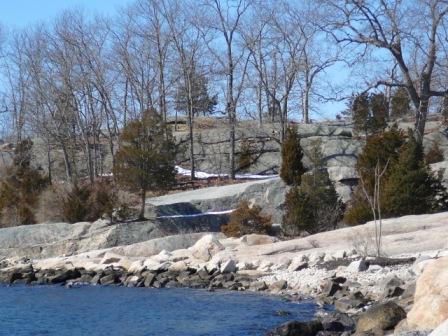 |
| A coastal shrubland with northern bayberry | Rock ledges along the coast with numerous red cedar trees |
Key References
See Appendix A for information on Connecticut’s geology and soils.
C. Cultural Resources
While a parcel of land may have been acquired primarily for its natural resources, there may be other resources that are not natural in origin, but worthy of protection and maintenance within a preserve.
Examples could include:
- old farm fields and pastures
- stone walls
- specimen trees
- barns
- planted areas
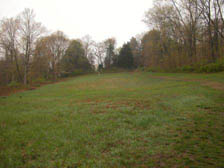 |
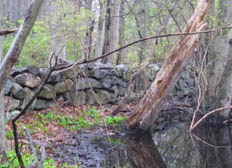 |
| An old pasture has been preserved as open space as stated in the property deed. | An old stone wall has been maintained by the land trust. |
Key References
Local expertise
Part 4. Existing Activities
This section describes the uses of your preserve, and thus provides the human side of the equation that your management recommendations need to consider. You may want to note if permission (written or verbal) is needed for any of these activities. Note that management activities are not described here as the management issues have not yet been discussed (Part 5).
A. Current Recreational Use (Active and Passive)
B. Research
C. Forestry
D. Education
A. Current Recreational Use (Active and Passive)
Allowed uses
- Are boundaries clearly posted?
- Is the preserve open to the public, and if so, when?
- If open to the public, are allowed uses passive recreation, active recreation, or both?
- Passive Recreation: e.g. hiking, birding, dog walking, boating
- Trails: What activities are allowed on existing trails
- No trails: (hiking. etc. through woods allowed) It could be that no trails exist or are planned for this property
- Active Recreation: e.g. boating/fishing, dirt bike riding, horseback riding, sports activities, hunting, rock climbing, beach activities
- Trails
- What activities are allowed on existing trails?
- No trails
- Are any active recreational activities allowed in areas without trails (e.g. rock climbing)?
- Trails
- Passive Recreation: e.g. hiking, birding, dog walking, boating
Recreational uses that are NOT allowed (Be specific)
B. Research
- Is research allowed on the Tract?
- Do you want to encourage research? If so, develop a list of research/management questions (Part 8), the answers to which would aid in management of the Tract.
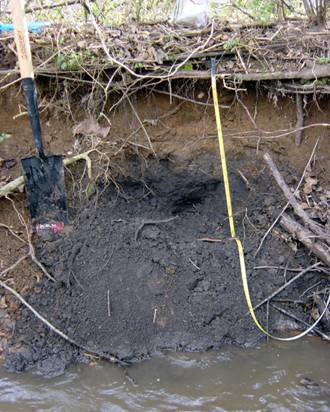 See Appendix B for language on allowing Species Collections.[/caption]
See Appendix B for language on allowing Species Collections.[/caption]
C. Forestry
- Are there current forestry activities?
- Is there a forestry plan for all, or part of, the site?
 Photo: College of Natural Resources, Utah State University, Logan, Utah, USA[/caption]
Photo: College of Natural Resources, Utah State University, Logan, Utah, USA[/caption]
D. Education
Is the Tract open for educational uses such as for field trips (K-12, university)?

Part 5. Management Issues, Activities & Opportunities
You’ve described the natural and cultural characteristics of the property, and how it is being used. This section is the place to discuss particular problems or concerns, and how you envision the future of the Tract— before you go on to detail your management recommendations in Part 6.
A. Natural Habitats, Plants, Wildlife
B. Cultural Resources
C. Recreation, Education Activities
A. Natural Habitats, Plants, Wildlife
For each issue that you want to describe, include the following:
1. “Natural Habitat, Plant or Animal”(be specific)
A. Existing site condition
B. Current management activities, if any
C. Planned or desired future condition
Examples:
Listed below are examples of issues that could be addressed here for specific natural habitats or species
-
- Invasive Species (plant and/or animal) – be specific as to what habitats are impacted and what the invasive species are.
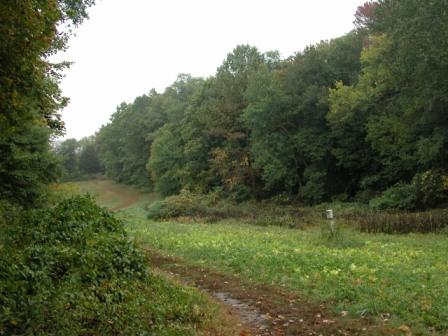

A long, narrow meadow with encroachment by numerous woody shrubs and invasive plant species. The bordering trees also shade the meadow plants along the margins. Another meadow showing encroachment by shrubs and invasive plants. This site might be managed differently than the previous meadow. 

A woodland where dogwoods have seeded in naturally, but have been managed to maintain the woodland and to discourage invasive vines from overtopping the trees. This photo shows mainly dogwood trees in an area that was not managed as in the previous photo. The dogwoods are very tall and spindly, and many have Asianic bittersweet vines encircling their trunks.
- Invasive Species (plant and/or animal) – be specific as to what habitats are impacted and what the invasive species are.
- Erosion (e.g. stream or riverbank erosion)
- Restoration Projects (examples: tidal marsh restoration, fish ways)
- Speciman Tree Protection
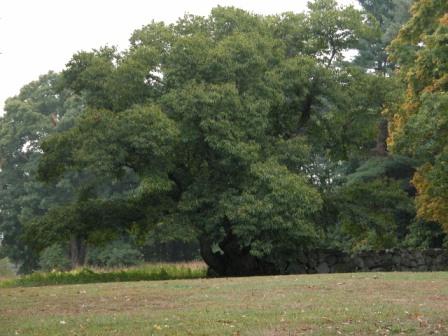
See Appendix C for other examples and ideas on Management provisions.
B. Cultural Resources
(You’re probably not going to add new cultural resources to the Preserve, but you may want to maintain and manage existing ones. For example, a field or meadow should be mown on a regular basis; a stonewall needs to be rebuilt, or an existing structure on the property needs to be rebuilt for storage of equipment)
1. “Cultural Resource” (be specific)
A. Existing site condition
B. Current management activities, if any (e.g. Pasture is mown annually to keep shrubs and saplings from overtaking herbaceous plants)
C. Planned or desired future condition
C. Recreation, Education Activities
- Boundaries - Are all boundaries clearly posted?
- Existing Trails (e.g. The existing trail system needs regular maintenance; Are there problems with overuse, erosion; Should some trails be closed, etc?)
- Planned or desired trails, parking areas, etc.
- Planned educational activities (e.g. nature trail guide)
Part 6. Management Recommendations and Planned Activities
This is where the rubber meets the road. Be as specific as you can. For the most part, the most effective recommendations specify not only what needs to be done, but who will do it, when, and how it will get done (cost, volunteer power, etc.)
A. Natural Resources, Plants, Wildlife
B. Cultural Resources
C. Recreation/Education Uses
A. Natural Resources, Plants, Wildlife
For each issue described inPart 5, what steps will be taken to achieve the desired future condition, in addition to any current management activities that are ongoing?
(Also, consider alternatives. If the desired future condition in not attainable in the short term, what is an acceptable future condition? Often eradication of invasive plants, while desirable, is not possible. So the goal might be to keep invasive plants under control, and possibly to focus on eradication within a significant habitat described inPart 3.)
Examples:
FOREST - Several invasive plant species were found in the forest borders:
Alliaria petiolata (Garlic mustard) and Euphorbia cyparissias (Cypress spurge)
- Infestation heavy and will require several years of hand pulling.
- Work party of volunteers to hand pull scheduled for May‘08
- Estimated total time for hand pulling in the first year (08) is 50 hours and should decrease in subsequent years.
- Area will be monitored annually by Preserve Steward to determine need for continued management.
- Plants must be bagged and disposed of properly.
MEADOW - Several invasive shrubs were found encroaching the meadow.
|
- The area will be mowed seasonally to control the shrub encroachment.
- The meadow will be treated with herbicide to control the invasives.
- Mowing and herbicide treatment will continue for several years.
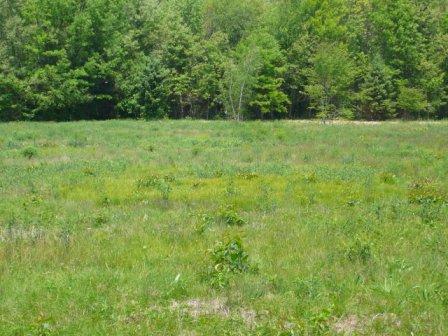 |
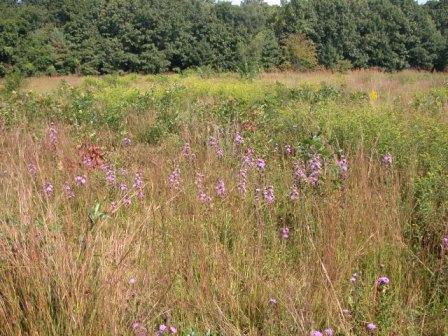 |
| The same meadow in Fenwick after mowing and herbicide treatments to control the shrubs. | The meadow after two years of management to promote grasses and herbaceous perennials. |
- Herbaceous perennials and grasses will be promoted in the area.
- Apply for a Wildlife Habitat Improvement Program (WHIP) grant from the NRCS to fund field restoration.
- Land trust members, along with a local Boy Scout troup and volunteers, will clear invasives and plant native grasses in work parties, using the WHIP funding.
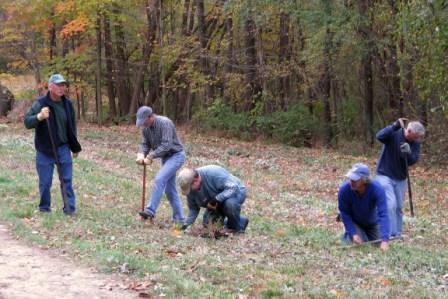 |
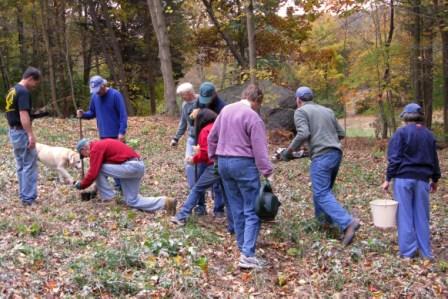 |
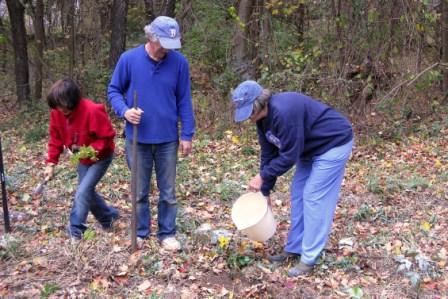 |
In this example, Essex Land Trust members and volunteers planted 1000 native grass and wildflower plugs in a one day work party to help restore a grassy meadow on the Essex Cross Lots property. |
Shrub and larger species will be removed with heavier equipment to reduce encroachment and protect grassland species diversity
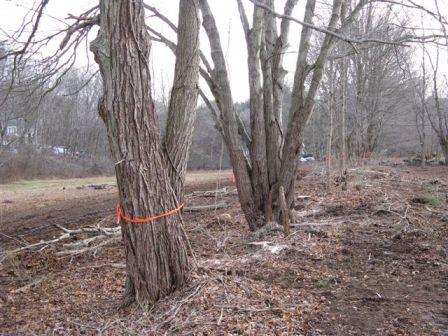 |
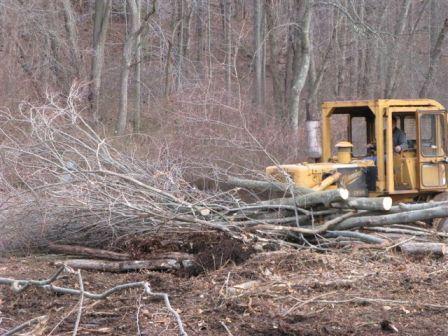 |
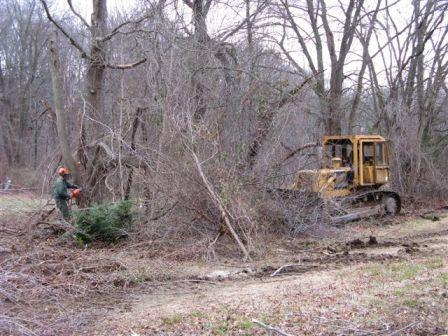 |
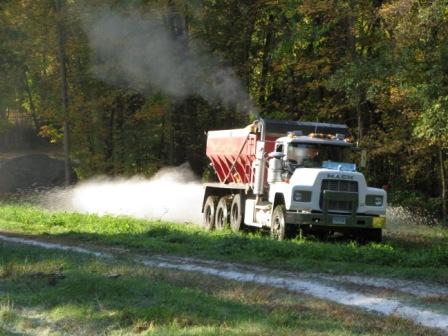 |
| These are additional pictures from the Essex Land Trust, showing woody plant removal at their Cross Lots property. | The Essex Cross Lots photos were taken by Bob Nussbaum. |
B. Cultural Resources
Example:
FIELD - One of the cultural habitats of a Preserve is a 12 acre field (formerly pasture). In order to maintain this field it must be mown at least every 3 to 4 years to control tree and shrub growth. Mowing will be done by XXX at a cost of XXX. Mowing will not take place between April 15 and August 14 to minimize impacts to wildlife. An annual survey will be made by the Preserve Steward to determine if mowing should occur more frequently, or if invasive plants are becoming a problem.
C. Recreation/Education Uses
Existing trails – annual maintenance conducted by Preserve Steward
New trails – If new trails are desired, plan them out (using GPS if available) to see how they would fit with the existing trail system.
Research and Education (e.g. nature trail guide, possibly with signage)
Part 7. Implementation Schedule
Each activity described in Part 5 (current activities) and Part 6 (recommended activities) should have its own table with an implementation schedule.
Be sure that the activities recommended here relate back to the General Goals of the Preserve (Part 2).
A. Current ongoing activities
B. Recommended activities
A. Current ongoing activities
|
ACTION
|
WHO
|
WHEN (initiation and completion dates)
|
RESOURCES
|
EVALUATION/MONITORING
|
B. Recommended activities
|
ACTION
|
WHO
|
WHEN (initiation and completion dates)
|
RESOURCES
|
EVALUATION/MONITORING
|
Part 8. Questions
Examples:
- What is the best way to control garlic mustard (or any other invasive species)?
- How can we control streamside erosion?
- What should we do to encourage bird or small mammal populations?
Part 9. Appendices
A. Bedrock Geology/Soils
B. Species Collections
C. Management Provisions
D. Contacts
E. Bibliography
F. Technical Resources
G. Funding
A. Bedrock Geology/Soils
Bedrock is the solid material that underlies the soil or other unconsolidated material of the earth. Bedrock geology can have a great influence on the nature of your preserve. The DEP 1985 Bedrock Geological Map of Connecticut (1:50,000) can be accessed at the website below.
Key references
CT DEEP Geology Quadrangle Reports
Soils are the unconsolidated mineral or organic material on the earth’s surface, and are one of the primary determinants of the vegetation on your property. Soils data can be accessed through the USDA Natural Resources Conservation Service website (below), or for simplified wetland and farmland soils, you can go to the NEMO Online Community Resource Inventory (CRI) website:
Key references
- http://websoilsurvey.nrcs.usda.gov/app/
- Rodgers, J. 1985. Bedrock Geological Map of Connecticut. CT Geological and Natural History Survey, CT Dept. of Environmental Protection in cooperation with U.S. Dept. of the Interior U.S. Geological Survey. Hartford, CT.
- Stone, J. R., J. P. Schafer, E. H. London, W. B. Thompson. 1992. Surficial Materials Map of Connecticut. U.S. Dept. of the Interior U.S. Geological Survey
B. Species Collections
Collection of plants, animals, minerals, water, and soil in the Preserve is not allowed unless specific permission is sought through an education, collection, or research permit. Permission may be granted based on the applicant’s demonstration of how collection will contribute to and aid an education or research effort. In no case shall the collection of plants and animals, other than invasive species, exceed the quantity necessary to maintain a healthy and viable population of that species.
C. Management Provisions
Here are several provisions to consider with possible wording. Taylor to fit your needs and goals.
Structures
No roads or permanent structures will be constructed in the Preserve. The placement of a temporary structure(s) may be approved as part of a research permit, provided it is removed when not in active use. In order for a structure to be considered in active use, it must be used at least once during a XX day period.
Fire Control
No fires shall be started in the Preserve unless it is a prescribed fire undertaken for a specific purpose identified in this Plan. Every effort shall be made to prevent fires from spreading into the Preserve. All uncontrolled fires shall be brought under control as quickly as possible.
Natural Disasters
In the event of a natural disaster, such as fire, flood, wind, disease, etc., any restoration activity will be limited to that work necessary to prevent further damage to resources. As an example, if a windstorm takes down a large number of trees, will you just leave the area alone, harvest the timber, or some combination?)
Signage and Markers
Location markers shall be placed delineating the boundaries of the Preserve.
Vegetation Management
Vegetation management (mowing, brush trimming, herbicide use, etc.) may be conducted within the Preserve. Any vegetation management necessary to maintain a trail shall be performed in a non-aggressive manner, aimed at maintaining a natural appearance.
Wildlife Population Control
Population control may be exercised whenever wild or feral fauna reach population levels that are adversely impacting Preserve resources.
(e.g. white tail deer, beaver)
Invasive Plant Species
Opportunistic plant species (native and non-native) could become established, outcompeting existing vegetation in the Preserve. If this condition develops to the extent that it threatens the quality and value of the Preserve, a control program may be developed to reverse the spread of invasive plant species. If a control program involves a regulated activity, all permits must be obtained.
Encroachments
There will be no encroachment of structures, easements, rights of way or land uses on the Preserve except for those specified in this management plan. No other encroachments shall be allowed to continue or become established.
Erosion Control (Consider natural erosion versus erosion from human activities)
Natural erosion shall not be controlled. Erosion and soil deposition affecting the Preserve due to past or present activities by people may be controlled.
Removal of or Introduction of Objects
Except as is provided for in this Management Plan, there shall be no introduction to, removal from, or consumptive use of any material, product, object, or animal in the Preserve. Prohibited activities include, but are not limited to, gathering of firewood or other plant or animal products and dumping, burying, or spreading of garbage, trash, or other materials.
D. Contacts
LIST OF CONTACTS OR POTENTIAL PARTNERS
E. Bibliography
BIBLIOGRAPHY AND PUBLICATIONS PERTAINING TO THE PRESERVE
F. Technical Resources
This is not an exhaustive list, but rather a selective list of what is available online.
- The NEMO Program’s Tools and Resources
- UConn Clear website https://clear.uconn.edu/
- CT Eco Natural Resource Information and Imagery
- CT Bedrock geology by quadrangle
- Soils maps (in addition to the CRI) http://websoilsurvey.nrcs.usda.gov/app/
- University of Connecticut Cooperative Extension Forestry
- Invasive plant species (includes Connecticut Invasive Plant List and fact sheets) http://www.hort.uconn.edu/CIPWG/
- Aquatic nuisance species http://www.seagrant.uconn.edu/ans.htm
- Connecticut Botanical Society http://www.ct-botanical-society.org/
- Connecticut Audubon Society http://www.ctaudubon.org/
- Connecticut Master Gardeners http://www.ctmga.org/
- Managing Grasslands, Shrubland and Young Forest for Wildlife A guide for the Northeast 2006 https://portal.ct.gov/DEEP/Wildlife/Habitat/Managing-Grasslands-Shrublands-and-Young-Forest-Habitats-for-Wildlife-A-Guide-for-the-Northeast
G. Funding
This is not an exhaustive list, rather several potential source of funding.
- NRCS (Natural Resources Conservation Service)
- WHIP (Wildlife Habitat Incentive Program) cost share agreements
- Long Island Sound Study Futures Fund (habitat restoration) http://www.nfwf.org/
- NU Community Investment Grants http://www.cl-p.com/community/partners/cinvest.asp
- National Fish and Wildlife Foundation http://www.nfwf.org/AM/Template.cfm?Section=Grants
Check into local and regional funding sources:
- Town funds (through the Conservation Commission budget, special project funding, or etc.)
- Local or regional foundation
For Citation Purposes: Connecticut Sea Grant & University of Connecticut’s Center for Land Use Education and Research. (June 8, 2016). Open Space Step-by-Step Guide. https://climate.uconn.edu/habitats-resources/open-space/step-by-step